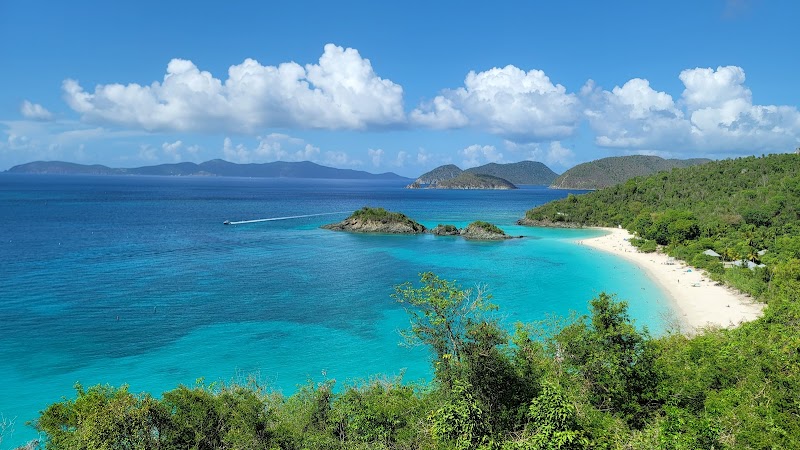Wildlife Adventures Near St Thomas, VI: Explore Nature’s Untamed Side
Discover the thrilling variety of wildlife near St Thomas, ranging from tropical birds to marine creatures thriving in pristine reefs. This guide helps you plan your outdoor adventures with tips and insights to make every encounter rewarding.
Stay Hydrated and Sun-Protected
Caribbean sun is strong. Bring ample water and wear wide-brim hats or sunscreen to stay safe during wildlife hikes.
Use Binoculars for Better Wildlife Viewing
Enhance spotting elusive birds and reptiles by carrying good-quality binoculars to view without disturbing habitats.
Choose Sturdy, Breathable Footwear
Trails can include rocky or root-covered sections; durable hiking shoes protect your feet while maintaining comfort in humidity.
Plan Early or Late Excursions
Wildlife is most active during cooler parts of the day, avoiding mid-afternoon heat and increasing your chances for sightings.
Wildlife Adventures Near St Thomas, VI: Explore Nature’s Untamed Side
St Thomas offers a vibrant wildlife experience framed by lush forests, turquoise bays, and intriguing trails. Whether you’re scanning the shore for endemic birds or tracing a reef edge for colorful marine life, the diversity here invites exploration. Wildlife near St Thomas spans from the elusive bees and butterflies darting amid tropical flowers to the coastal critters challenging currents in the surrounding waters.
Start inland at places like the Francis Bay Wildlife Sanctuary where iguanas sunbathe on rocky outcrops and native birds—such as the Bananaquit and the Zenaida Dove—move confidently through the foliage. Salt ponds and mangroves provide feeding grounds for herons and egrets, while reef edges teem with parrotfish and unpredictable sea turtles. Wildlife enthusiasts can expect vivid encounters with creatures adapted to this fiercely vibrant environment, where every bend of a trail or splash near the shore teases new discovery.
Practical wildlife exploration tips are essential. Equip yourself for heat and humidity: carry water, wear durable shoes, and plan morning or late afternoon excursions to avoid midday intensity. Binoculars and a good camera bring distant birds and shy reptiles into clearer focus. Local guides offer invaluable insights about subtle habits and hidden habitats, enhancing your chances to spot rarer species.
Popular keywords to guide planning include "St Thomas wildlife tours," "birdwatching St Thomas," "Caribbean reptiles St Thomas," "marine life excursions St Thomas," and "St Thomas nature trails." These searches highlight not just what you’ll find but how to experience it responsibly and completely. Insight into seasonal patterns helps to align your visit with peak wildlife activity, turning a casual outing into a memorable adventure.
Exploring wildlife near St Thomas is not simply a walk in the park — it’s a dynamic meeting with an environment that demands respect and rewards patience. With thoughtful preparation, you’ll connect deeply with nature’s fierce beauty in this island setting, enhancing your trip with stories of encounters and unexpected moments.
Nearby Trips
All Adventures
Boat Charters
Water Activities
Adventures near Charlotte Amalie
Discover the unique and memorable adventures that make Charlotte Amalie special.
Frequently Asked Questions
What are the best wildlife spots to visit in St Thomas?
Francis Bay Wildlife Sanctuary and Mangrove Lagoon are top spots where you’ll encounter native birds, reptiles, and coastal marine life. Early mornings offer the best activity and quieter experiences.
Are guided wildlife tours available in St Thomas?
Yes, several local companies offer guided tours focusing on birdwatching, reef snorkeling, and terrestrial wildlife. Guides provide valuable context on species behavior and conservation efforts.
What wildlife is unique to St Thomas?
Look for the Virgin Islands tree boa, a non-venomous snake, and the endemic St Thomas racer, along with rare bird species like the White-necked Crow. The reefs host diverse parrotfish and hawksbill turtles.
Is it safe to explore wildlife trails alone?
While trails are generally safe, it’s recommended to hike with a companion or local guide, especially in less trafficked areas. Prepare adequately with water, footwear, and knowledge of the trail.
How can I minimize my environmental impact while observing wildlife?
Stick to designated paths, avoid feeding animals, and use reef-safe sunscreen to protect marine ecosystems. Always observe wildlife from a respectful distance.
When is the best time of day for photographing wildlife?
Early morning and late afternoon provide softer light and greater animal activity. Look for elevated viewpoints near Francis Bay and mangrove shorelines for diverse scenes.
Recommended Gear
Lightweight Hiking Shoes
Protects feet on uneven trails while allowing breathability in humid tropical climates.
Water Bottle or Hydration Pack
Hydration is critical; carry at least 1 liter to combat heat and humidity during hikes.
Binoculars
Helpful for bringing distant birds and shy animals into clear view without disturbing their space.
Bug Repellent
Prevents discomfort from insects more active during rainy and warmer spring months.
Local Insights
Hidden Gems
- "Secret Beach Cove at Sapphire Bay"
- "Quiet mangrove trails at Mangrove Lagoon"
- "The overlook at Mountain Top for birdwatching"
Wildlife
- "Virgin Islands tree boa"
- "Hawksbill sea turtles"
- "Bananaquit and Zenaida Dove"
History
"St Thomas’s natural habitats intertwine with a legacy of colonial-era plantations, now protected parks where native wildlife reclaimed their space amidst vestiges of old estates."
